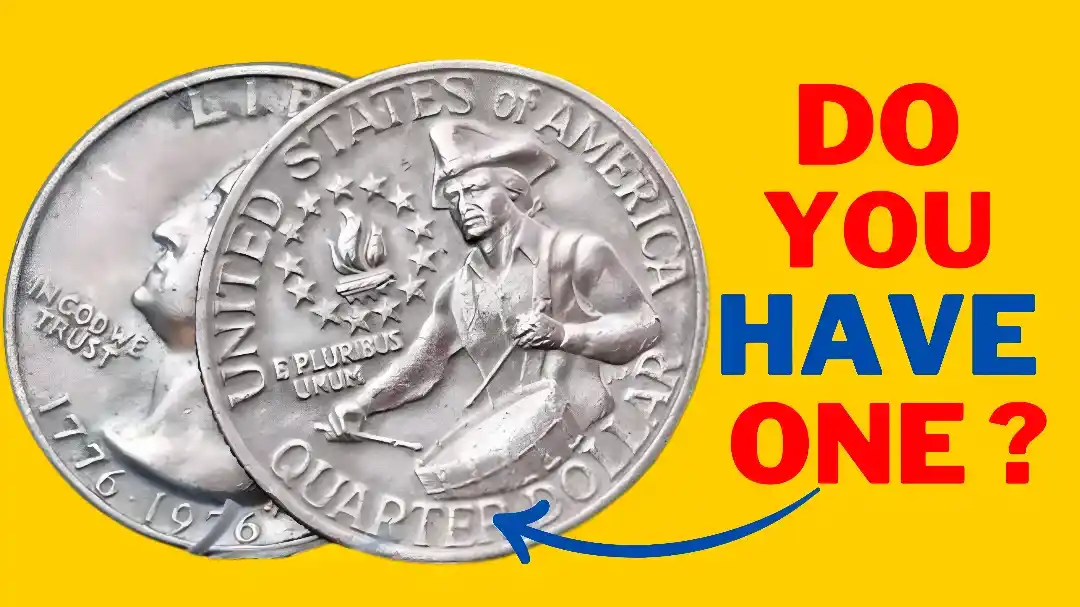Rare Bicentennial Quarter: The story of the Bicentennial quarter worth one million dollars is a fascinating blend of history, artistry, and numismatic rarity. Although millions of coins were minted to commemorate America’s 200th anniversary, only a few of these coins have unique features that dramatically increase their value. This guide explains what makes these coins so special and why one of these may still be hidden.
Historical Background of the Bicentennial Quarter
Introduced in 1975 and 1976 to commemorate the 200th anniversary of the United States, the Bicentennial Quarter differed from the traditional Washington design. Its reverse featured a colonial drummer with a torch and thirteen stars, symbolizing the original colonies. The design was part of a wider national celebration and was issued in large quantities for circulation throughout the country, making it a recognizable and nostalgic coin for millions of Americans.
What Makes Million-Dollar Quarters Different
Although most Bicentennial quarters are worth only face value, Million-Dollar Quarters are distinctive because of rare minting anomalies. Some coins were minted on 90% silver planchets instead of the usual copper-nickel casing, and others had errors such as doubling or die alignment. These differences are often not visible at first glance, but can turn an ordinary coin into a record-breaking collectible when confirmed by professional grading.
The Role of Condition in Value Rare Bicentennial Quarter
A rare variety alone does not guarantee wealth; its condition matters greatly. Coins graded “Mint State” or “Proof” with minimal wear are far more desirable to collectors. Bicentennial coins worth millions of dollars usually combine pristine preservation with their own unique error or metal composition, making them nearly flawless examples of numismatic history.
Could they still be in circulation?
Surprisingly, yes—though the probability is low. Because these coins were widely issued, it’s possible that a rare coin could still be in circulation decades later. Coins can disappear from collections, be inadvertently spent, or be found mixed in with banknotes. Enthusiasts and treasure hunters often rummage through their loose change in hopes of hitting just such a jackpot.
How to Identify Potential Treasure
- The most reliable way to determine if a Bicentennial quarter is rare and valuable is to check the following:
- Metal composition (90% silver rather than copper-nickel)
- Imperfections such as repetitions, misalignments, or unusual strikes
- Condition, preferably uncirculated or proof quality
- A professional grading service is necessary to certify these characteristics and determine a fair market value.
Frequently Asked Questions (Rare Bicentennial Coin Worth a Million Dollars)
Question 1: Are all Bicentennial coins valuable?
No, most coins are only worth 25 cents unless they have rare errors or were minted on special silver plates.
Question 2: How can I tell if my Bicentennial coin is silver?
Silver coins make a different sound when dropped and weigh a little more. They also don’t have the copper-colored stripe on the edges that appears on cased coins.
Question 3: Where can I sell a rare Bicentennial coin?
You can sell through reputable coin dealers, auction houses, or specialized online platforms—after professional grading.
Question 4: What’s the best way to find rare coins?
Search bank rolls, check for loose change, and inspect coins with a magnifying glass. Information on known mint errors will be helpful.
Question 5: Can I really find a coin today?
Yes, although the chances are very low. Rare coins do occasionally come into circulation, often by chance.
